Nekomonogatari Black – signs of doom This entry was posted by Vale.
That’s Shaft’s Monogatari for you. No one writes 蠢く (ugomeku) with kanji like that anymore. Though this is still the better kind, since there aren’t any (much) simpler characters for the word.
Just look at that “Scene no.” line in the bottom: 畫 and 號 are the ancient and complicated variants of 画 and 号, while 貳, 拾, 捌 and 參 are likewise ancient alternatives for the number kanji. These are only used on banknotes nowadays, though I’d say even banknotes only use 弐 and 参 instead of the variants on screen. Read up on alternative characters for numbers if you’re interested.
All the kana in the main text is katakana, which also gives it an archaic feel (this is the writing style for pretty much the entire show). Not to mention it’s used in a very archaic way too (サウ for そう for example). They also used the kanji 云 for “say”. It’s an old character for the verb, but outside of compounds like 云々 you don’t really see it anymore. Apparently its preferred use is when the “say” or “call” is abstract, instead of an actual action of speaking. (Such as “I’m called…”)
If you’ve never before seen the katakana wi, now you have.
The “readings” under these kanji are of course fake. They just added the titles of the girls’ stories as “readings” to them.
Yes, the title screens actually announce that the typeface used in the show is HGP Mincho B. Though most professional Japanese fonts would probably have all these old characters anyway. Also, Suruga best girl.
I believe this text is from the 6th book of the series, that this “movie” is based on.
That V-shaped device on the disc reminds me of that DMP concept a while ago.
正坐 (seiza) is the “right way to sit”. Of course here it’s written with the rarely-used kanji of 坐 instead of the common 座.
This artwork’s so out-of-place that I’m sure it’s some kind of a reference, but I don’t know what to.
Sometimes the problem isn’t translating the signs, but finding them. For example in this case the two characters read 2 and 3, but the whole cut is only a few frames long, so it’s very easy to miss.
And rest assured, the Japanese Diet’s library isn’t exactly tiny. A reference to Haruya.
The white tag at the top of the shelf in the right reads “employment exams” too. On the right, the two green “flags” that are missing translation are “Public servant exams” and “Lawyer qualifications”. The one in the back on the left has something to do with finance too (the second character is 金), but it’s too blurred for me to read.
The tags on the right read 11: Japanese Literature (文庫 and 新書). 文庫 (bunko) are cheap, paperback pocket releases. 新書 (shinsho) are proper, newly published books.
A wall of ancient Japanese. It’s written in kanbun (without any annotations, thus hakubun). It’s from the Kojiki, the story of how Susanoo dealt with Orochi (then goes on to the next chapter). The translation is not my work, it’s the commonly used one by Chamberlain. Yes, it reads very faggy (or should I say “august”?).
It’s just like earthquake warnings.
I’ll just leave this here.
The standard ‘monogatari construction scene. All the signs read “No trespassing”, “Private property” or “Safety first” (in the right). This applies to all such scenes.
The bandages have the sutra of the buddha of medicine (薬師如来 yakushi-nyorai). It’s the seventh part of it, the Chinese original reads as follows:
第七大願。願我來世得菩提時。若諸有情。眾病逼切無救無歸無醫無藥無親無家貧窮多苦。我之名號一經其耳。眾病悉得除身心安樂。家屬資具悉皆豐足。乃至證得無上菩提。
And the English translation:
The seventh great vow: In the future when I shall attain unsurpassable complete Enlightenment may those sentient beings who are tormented by diseases but with neither help nor refuge, neither medical treatment nor medication, neither relatives nor family, yet in poverty with much hardship, upon hearing my name, all become free from diseases, attain peace and joy of body and mind, have abundance of family and possessions, and even up to all attain unsurpassable complete Enlightenment.
(Source.)
I really like the word “Stygian”. Almost as much as that insane kanji for black there. 黝, read as kuro here means a very dark bluish black. Probably in this case it’s only used because it’s a lot more complicated than the simple black (黒).
The on-screen text refers to their adventures from the time when Araragi encountered Shinobu and became a vampire.
These are also quite characteristic of the ‘monogataris. At least they aren’t hard to read or typeset.
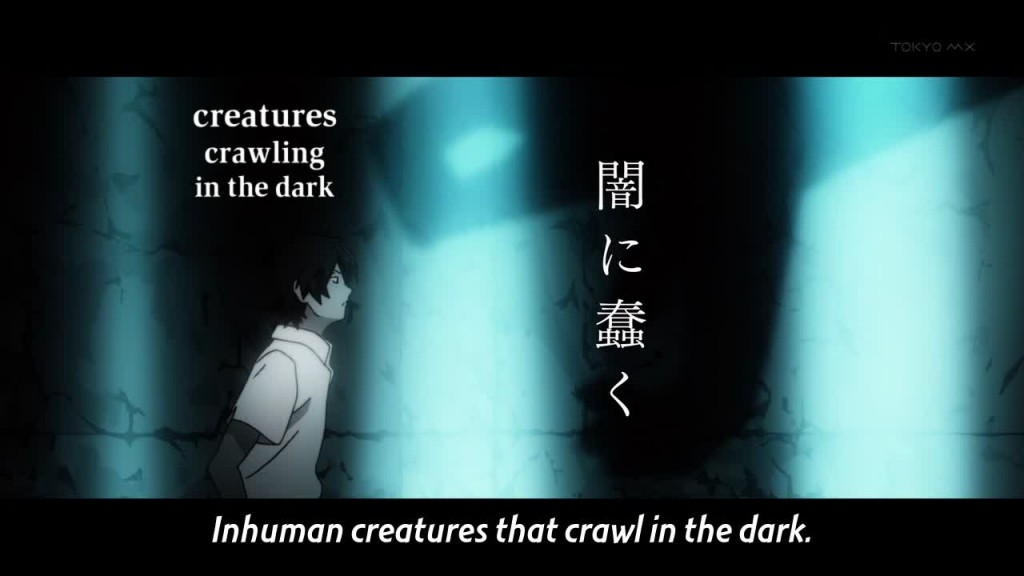
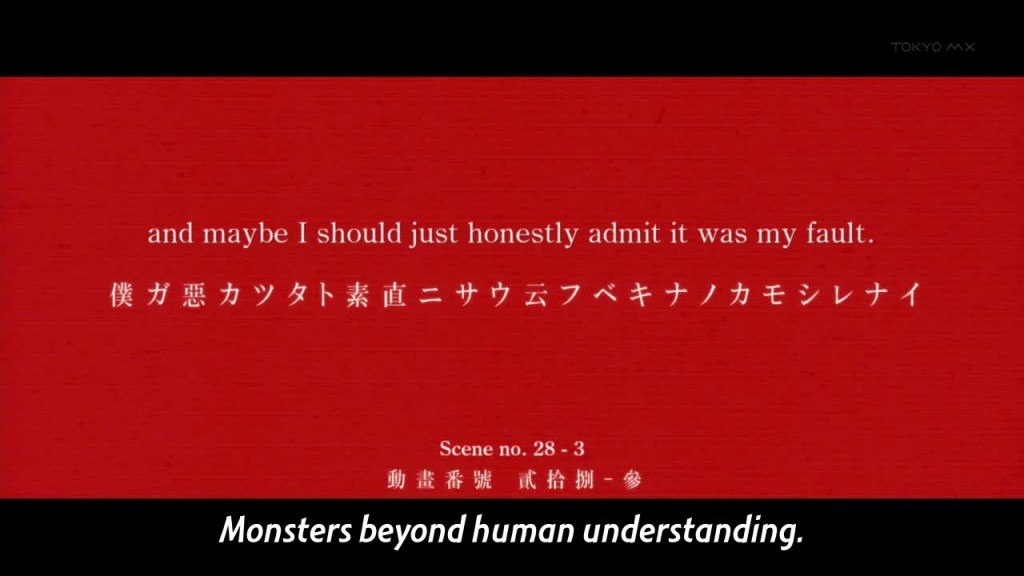
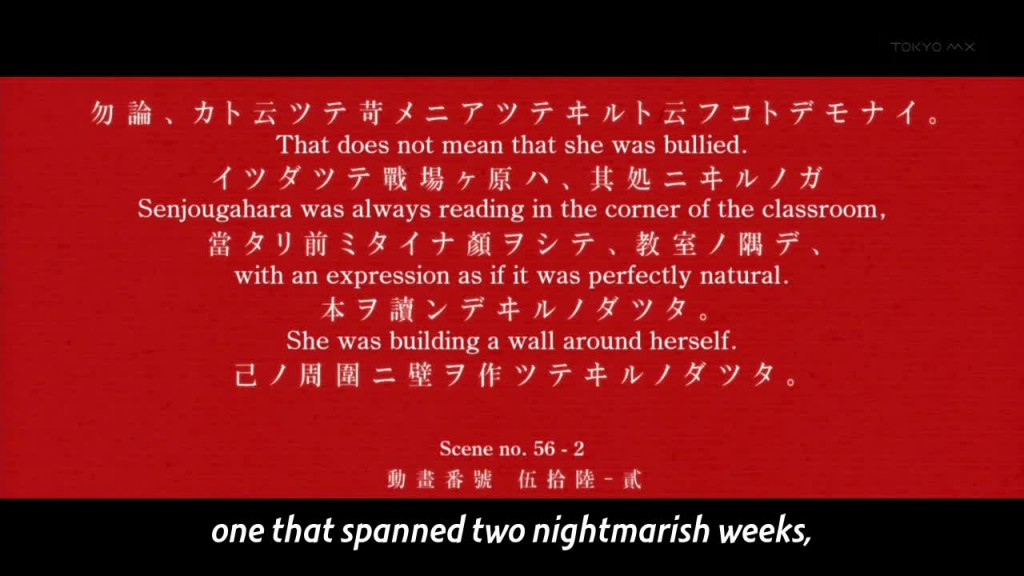
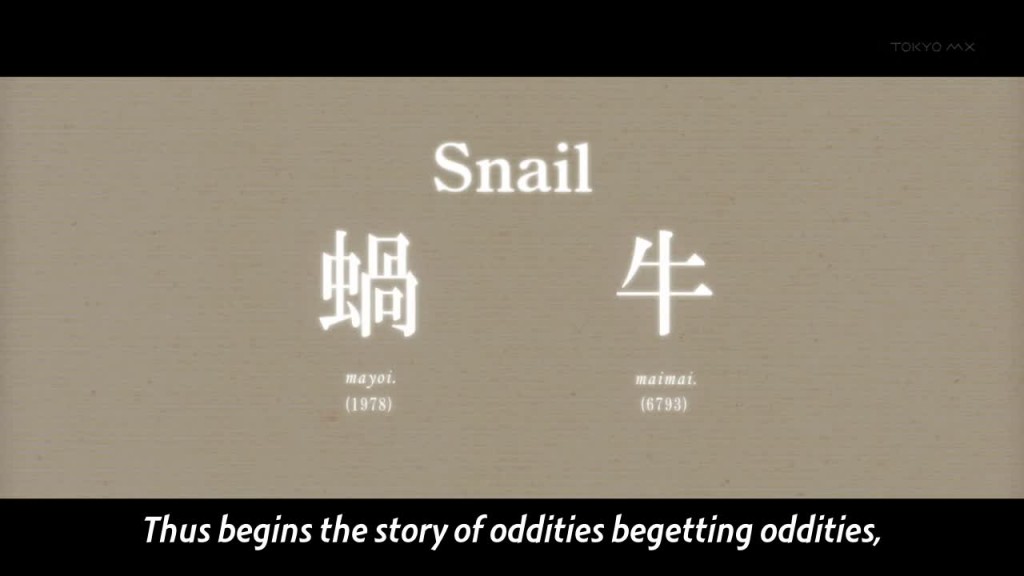
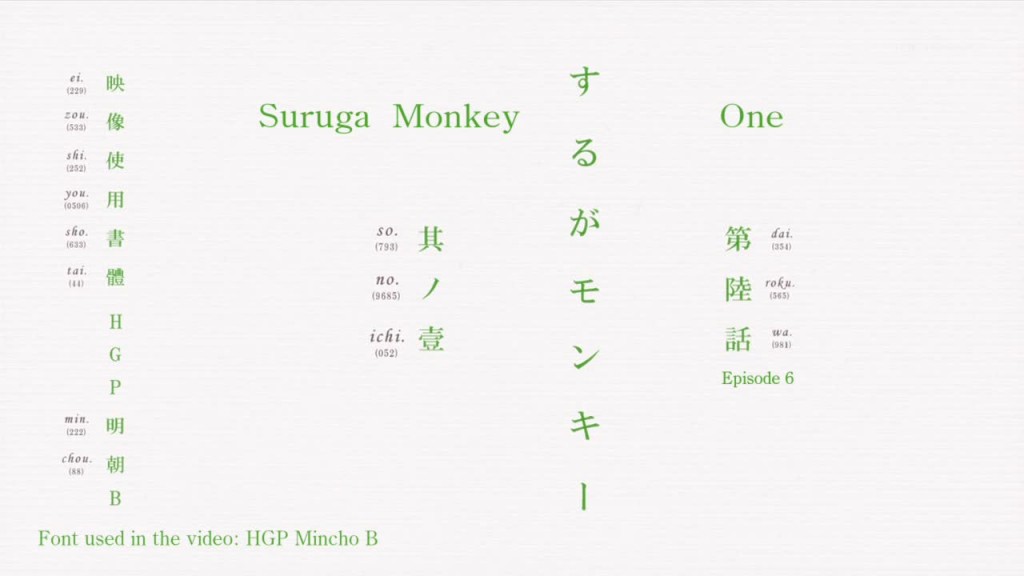
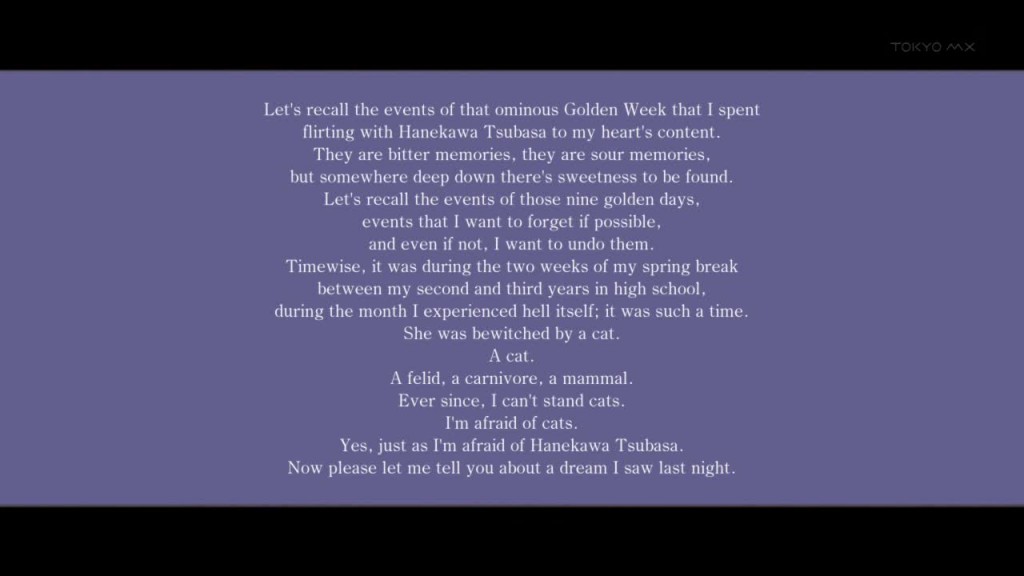
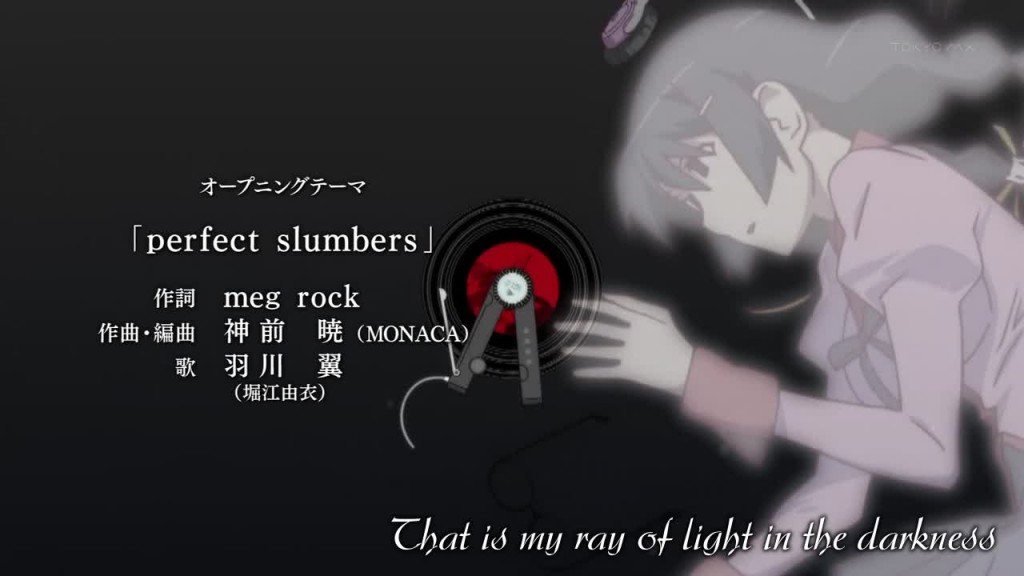
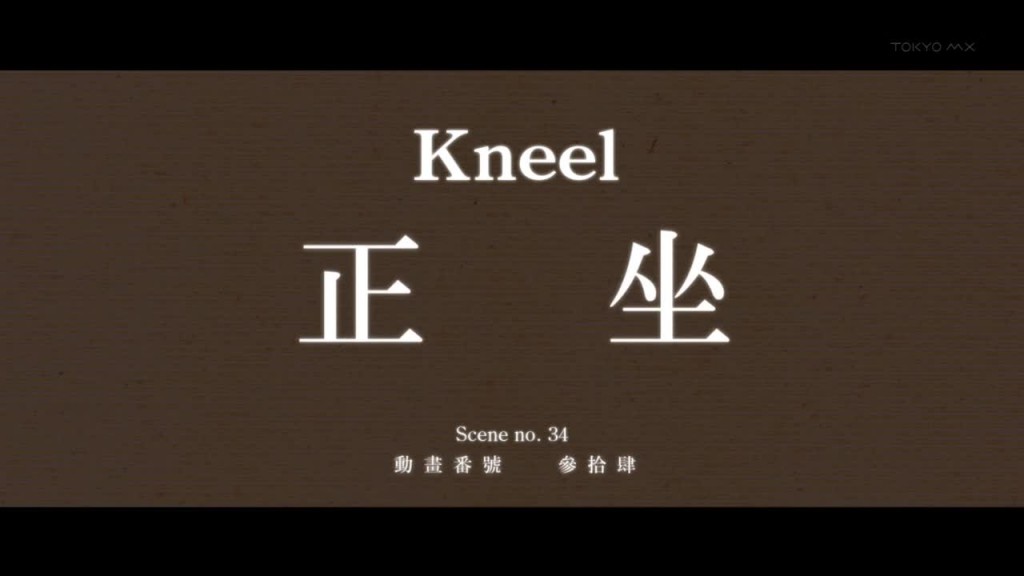
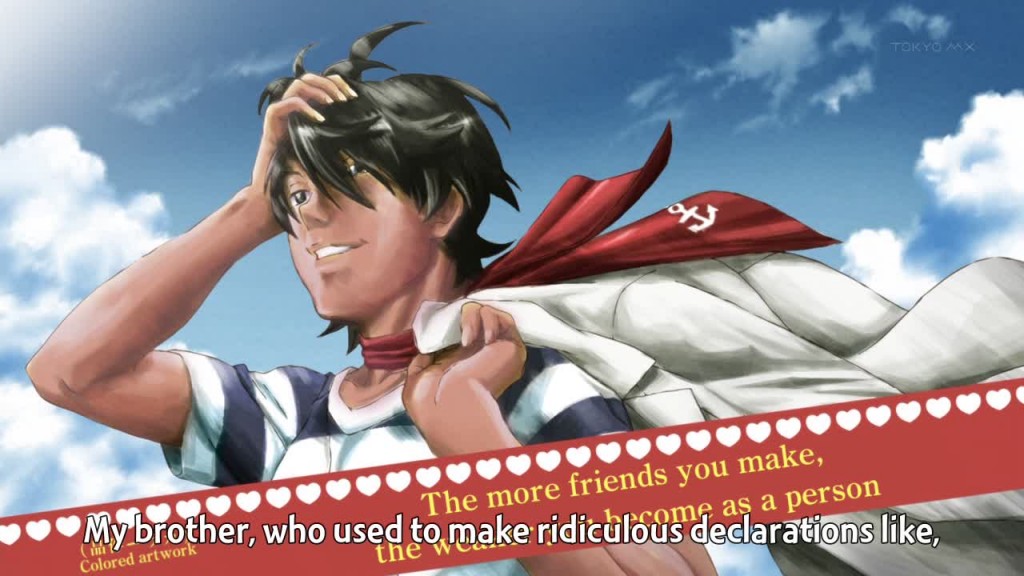
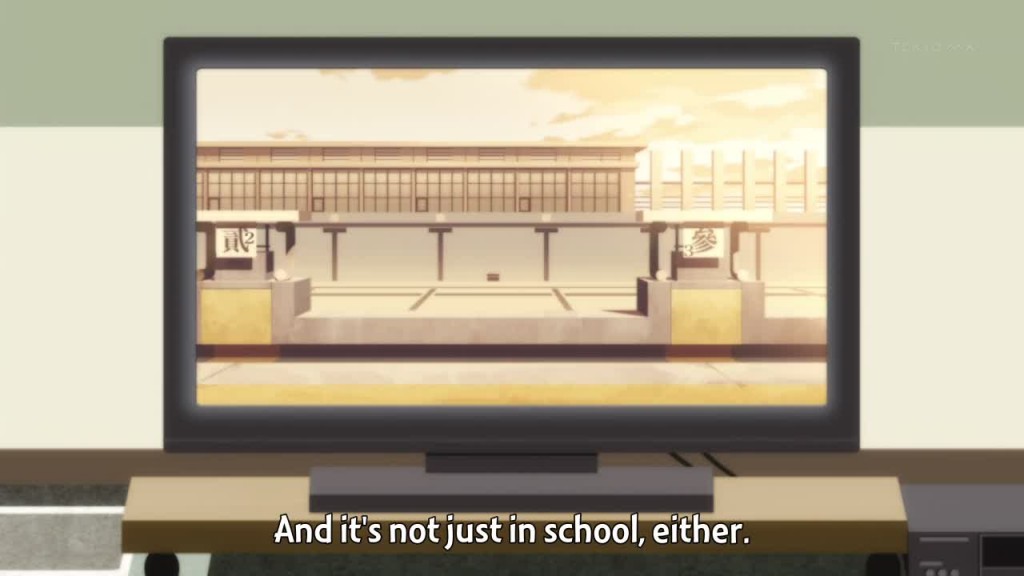
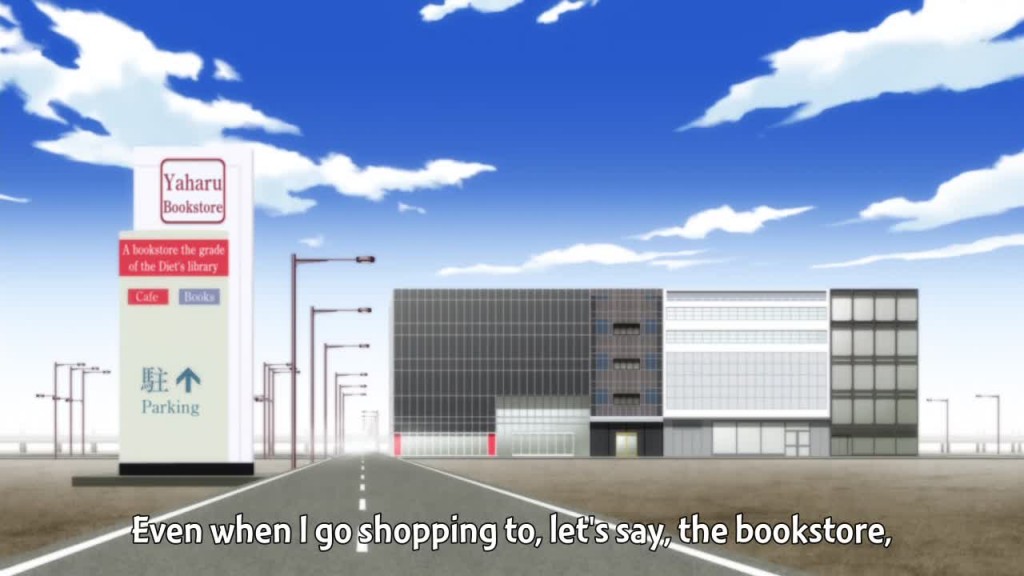

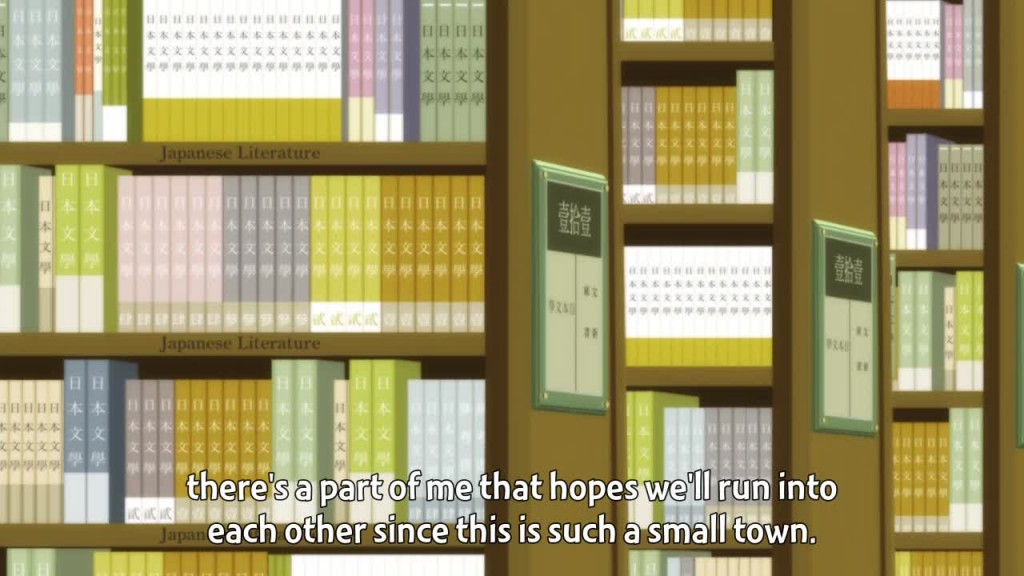
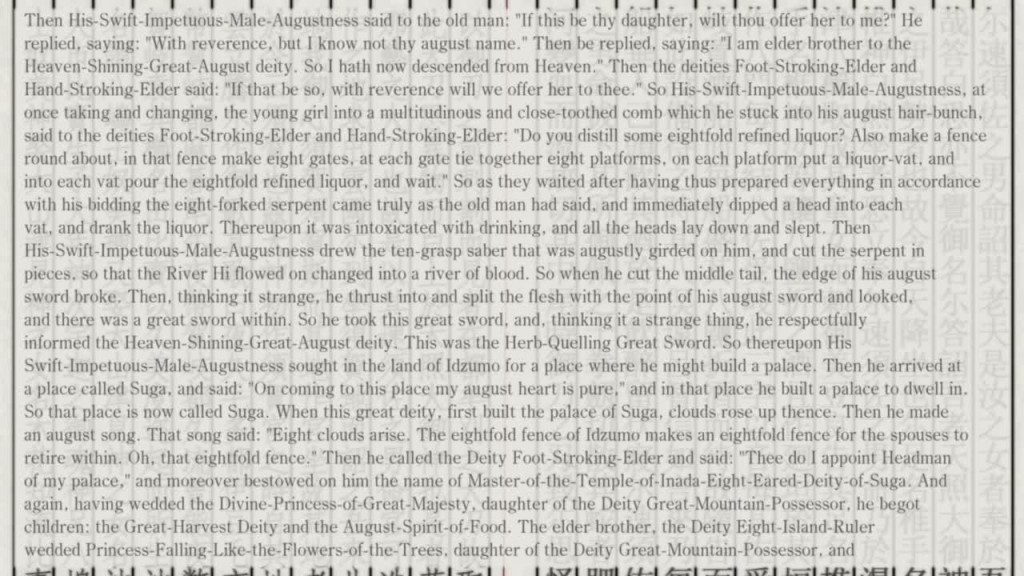
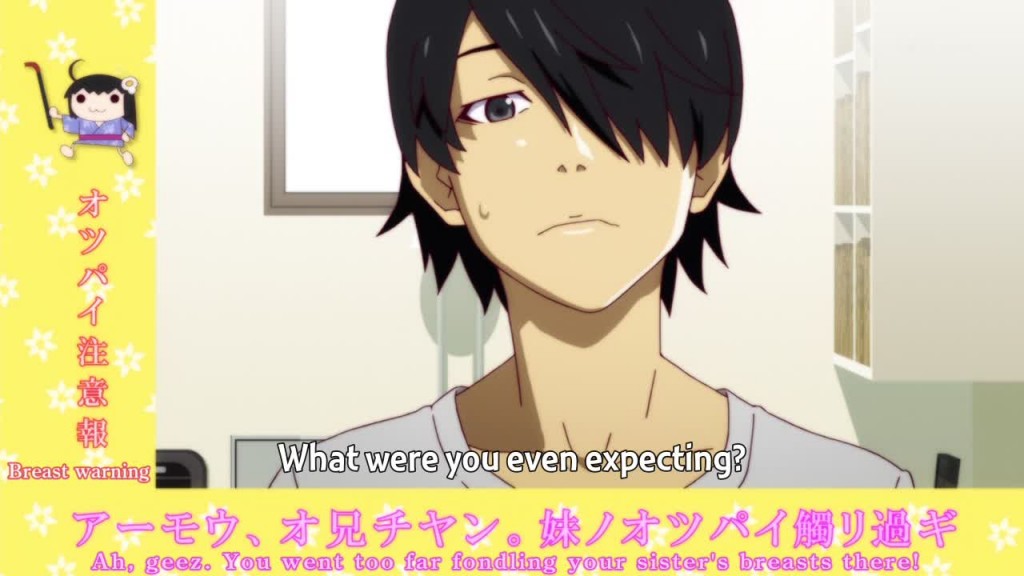
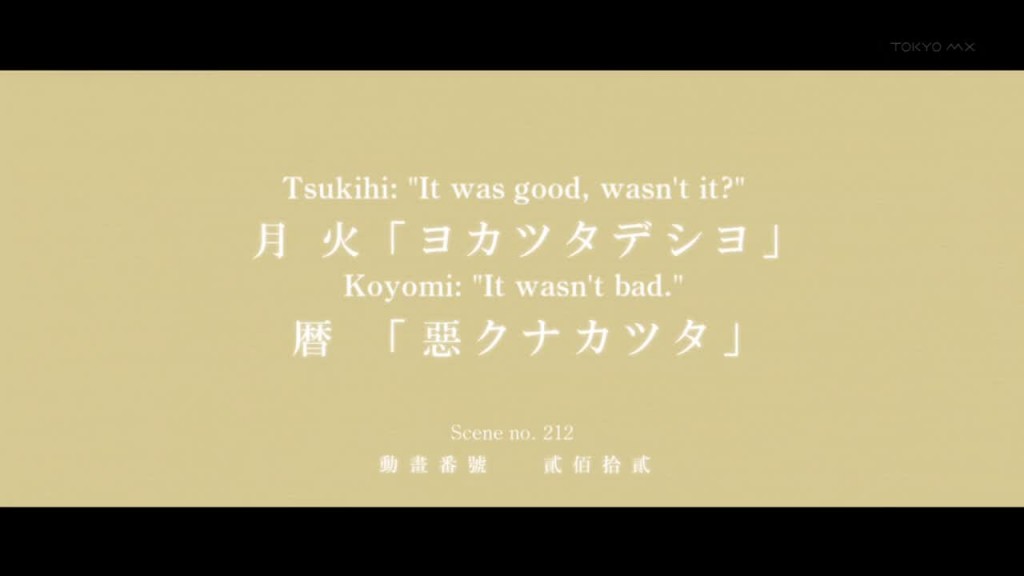
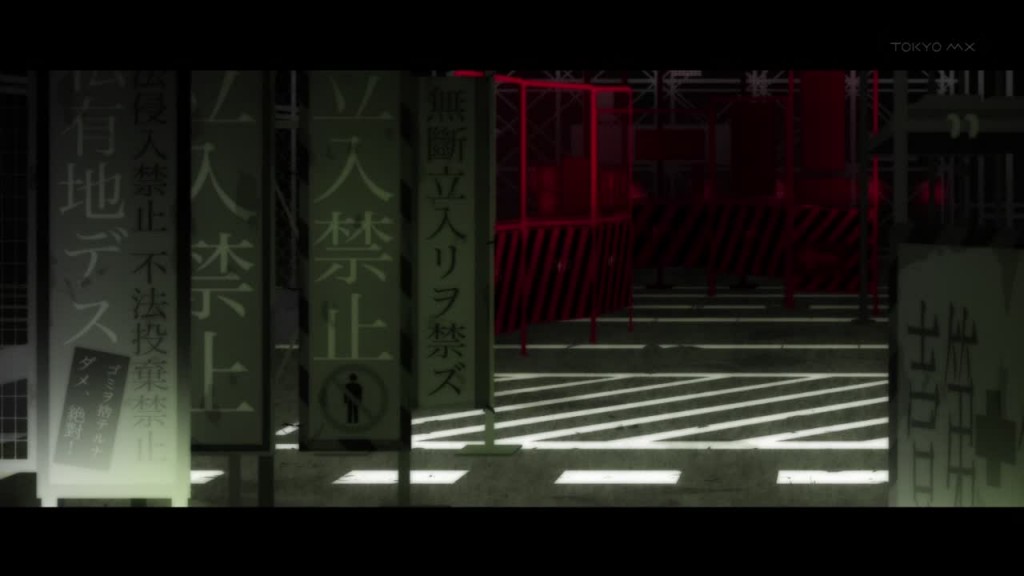
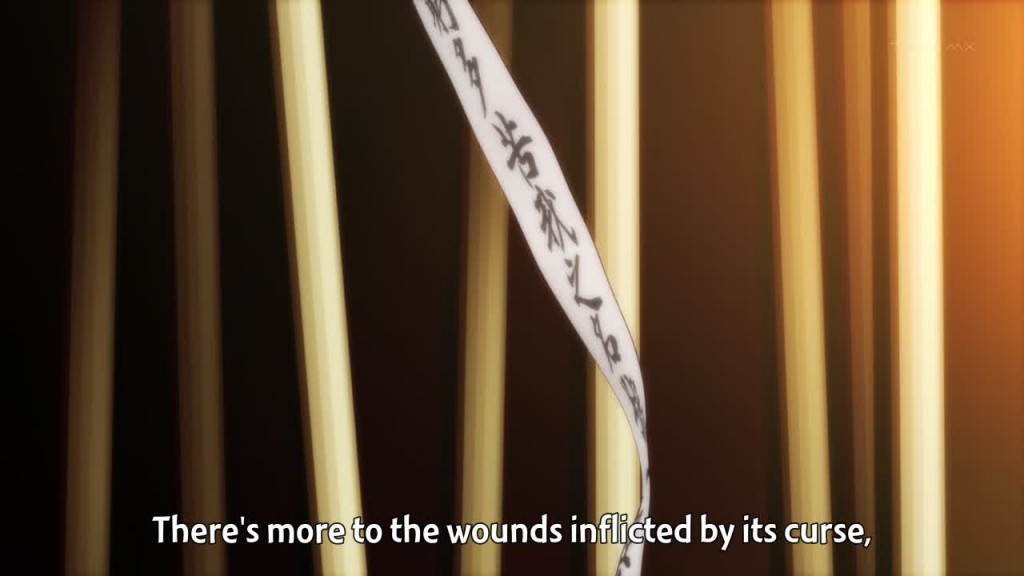
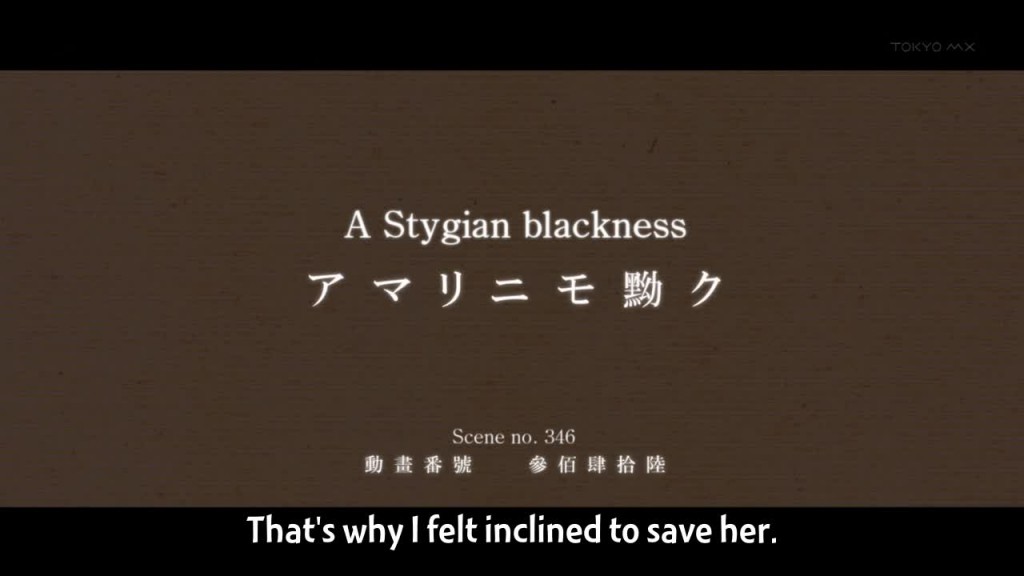
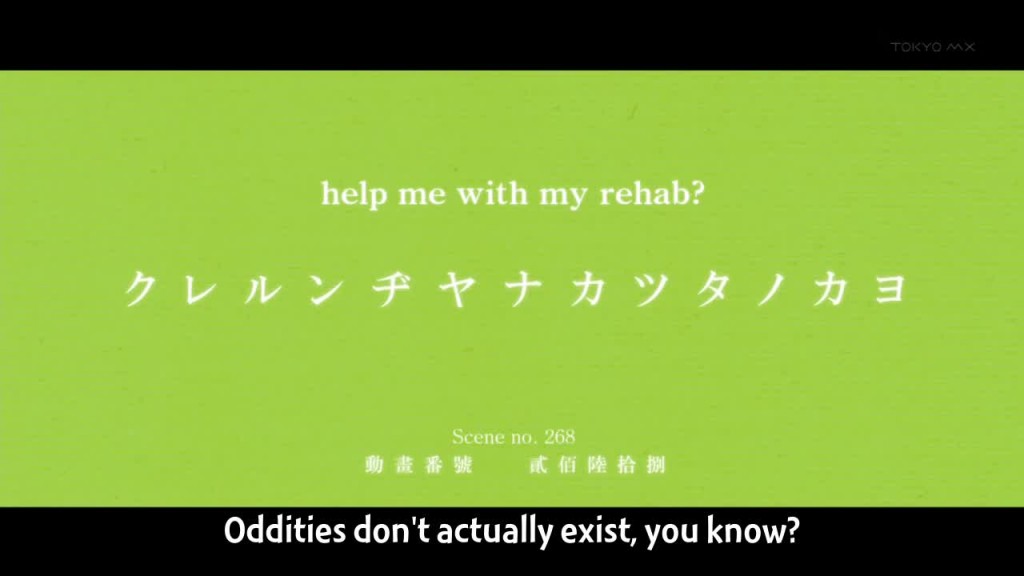
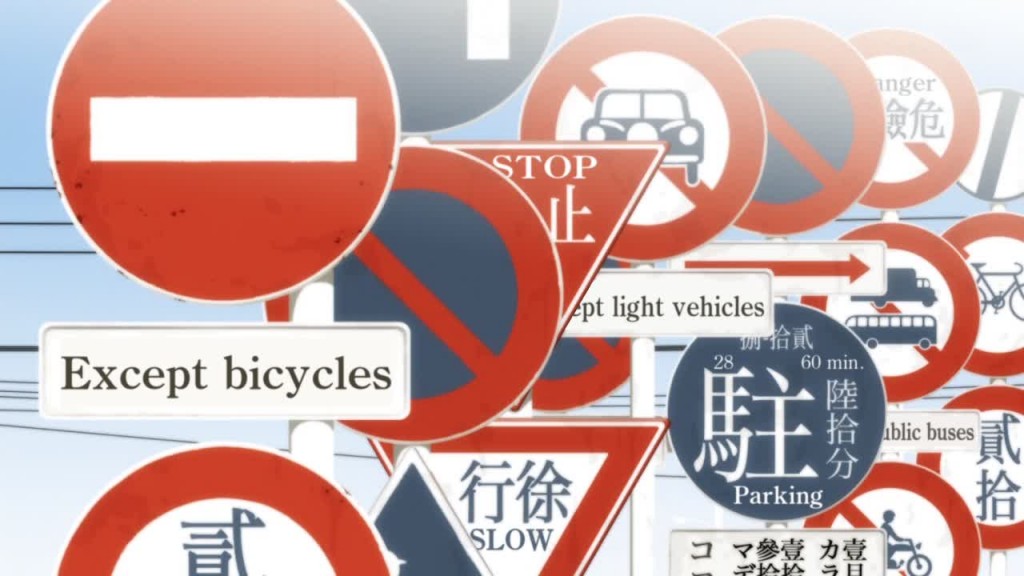
2japanese4me
So few comments, so I just wanted to thank you personally for this.
That was pretty informative, but… hey vale, what about Joshiraku? Oh, and you can take a look at Saint Young Men, if you want.
“This artwork’s so out-of-place that I’m sure it’s some kind of a reference, but I don’t know what to.”
It reminds me of WWII US Navy recruitment posters: http://oldnfo.org/wp-content/uploads/2014/10/0911.jpg